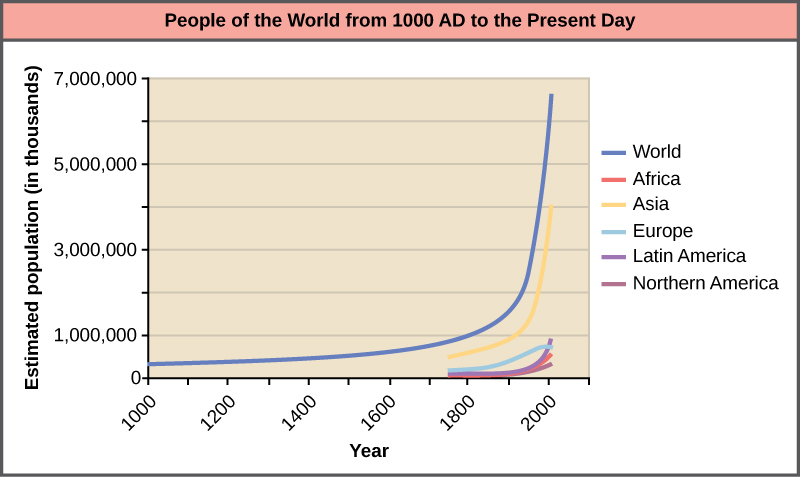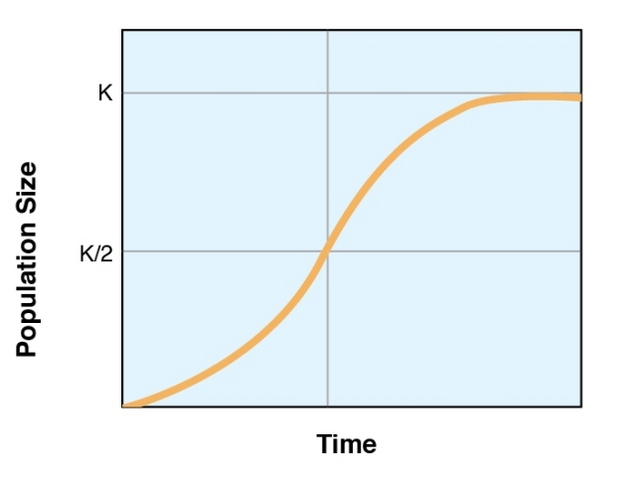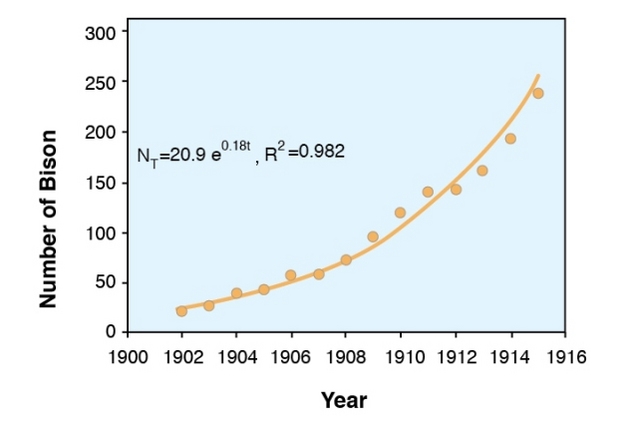Current Human Population Growth Is Best Described as Being
At present the number of births. Today our population is over 7 billion.

An Introduction To Population Growth Learn Science At Scitable
The S-shaped sigmoid growth form is represented by the following equation.

. Global population growth slowing due to greater longevity and lower fertility rates. Mali a vast Sahelian country has a low-income economy that is undiversified and vulnerable to commodity fluctuations. The extreme poverty rate in 2019 was 423 as a result of outstanding agricultural output since 2014.
Increasing growth and decreasing rate of growth. In the following 84 years the world population grew by 5 billion people reaching 7 billion in 2011. The worlds population is getting older and growing at a slower pace but is still expected to increase from 77 billion currently to 97 billion in 2050.
In 2019 a warning on climate change signed by 11000 scientists from 153 nations said that human population growth adds 80 million humans annually and the world population must be stabilizedand ideally gradually reducedwithin a framework that ensures social integrity to reduce the impact of population growth on GHG emissions and biodiversity loss. Both of these measures of population growth across the world are shown in the two charts. In fact the growth of the human species is the main factor in the mass animal extinctions that we have experienced over the recent years.
This is the change in population as determined by births deaths plus migration flows. 1 Natural population growth. A population is experiencing exponential growth.
The global population would best be described as being at which point. A classic attempt to explain the relationship between a human population and its impact on the environment is the IPAT equation. The developing world is early in the demographic transition so they are expected to increase significantly.
The high birthrate in Italy decades ago changing to a low rate today is an example of an _____. That is the population size is increasing at a greater and greater rate. Xgabriellex Points 723 User.
This equation was developed by biologist Paul. And steady but slower growth today. Mathematical expressions to show the types of population described below.
2 Population growth rate. By 2023 world population reaches 8 billion people. At the end of each year a revised series of population estimates from the census date forward is used to update the short-term projections for the population clock.
Migration flows are not counted. In China the one child population policy has significantly diminished population growth rates and zero-population growth effects are hoped for as soon as 2030. Propose some reasons why population growth is so rapid immediately after the lag phase in.
With enormous cheap energy at its disposal the human population grew rapidly from 1 billion in 1800 to 2 billion in 1930 4 billion in 1975 and over 75 billion today. The projections are based on a monthly series of population estimates starting with the April 1 2020 resident population from the 2020 Census. Rapid population growth in cities as people migrate from rural to urban areas for industrial jobs.
Slow growth followed by exponential growth starting about 500 years ago. Use the key to help you write the expressions. Around 1804 the world population reached 1 billion people.
Stage five of the demographic transition model due to very low birth rates. The general trend of the growth of human population is best described as exponential. Shortage of arable land on which to raise crops and other food products to support the population.
Which describes the current human population growth. What factors might have contributed to an exponential growth pattern in the history of human population growth. In the last phase the new organisms are almost equal to the number of dying individuals and thus there is no more increase in population size.
Remember that developed countries have leveled off in population growth and some are even in decline. The event that precipitated _____ human population growth is called the Industrial Revolution. The equation maintains that impacts on ecosystems I are the product of the population size P affluence A and technology T of the human population in question.
Try it out below. After 24 of these cycles the population would have increased from 1000 to more than 16 billion bacteria. And then the world population really took off.
And the growth continues. The important concept of exponential growth is that the growth ratethe number of organisms added in each reproductive generationis itself increasing. If the current course is not altered well reach 8 billion by 2020 and 9 to 15 billion likely the former by 2050.
The current human population is estimated to be over 7 billion. Point 3 The majority of the current human. Before we had gotten to the 6 billion mark humans alone were already using over 40 percent of the global NPP number.
The general trend of the growth of human population is best described as exponential. Unstable food supply due to rapidly growing population. In various areas throughout the world different population control strategies are being implemented in an effort to reduce population growth and achieve replacement fertility.
Its rapid population growth a fertility rate of 588 children per woman in 2018 1 and climate change pose a threat to agriculture and food insecurity. DNdt rN K NK rN 1 NK where dNdt is the rate of change in population size r is biotic potential. In 1927 the 2 billion mark was made.
Which of the following best describes the general trend of human population growth over time. This is the change in population as determined by births and deaths only. Decreasing growth and increasing rate of growth.

Human Population Growth Biology For Majors Ii

An Introduction To Population Growth Learn Science At Scitable

An Introduction To Population Growth Learn Science At Scitable

An Introduction To Population Growth Learn Science At Scitable
Comments
Post a Comment